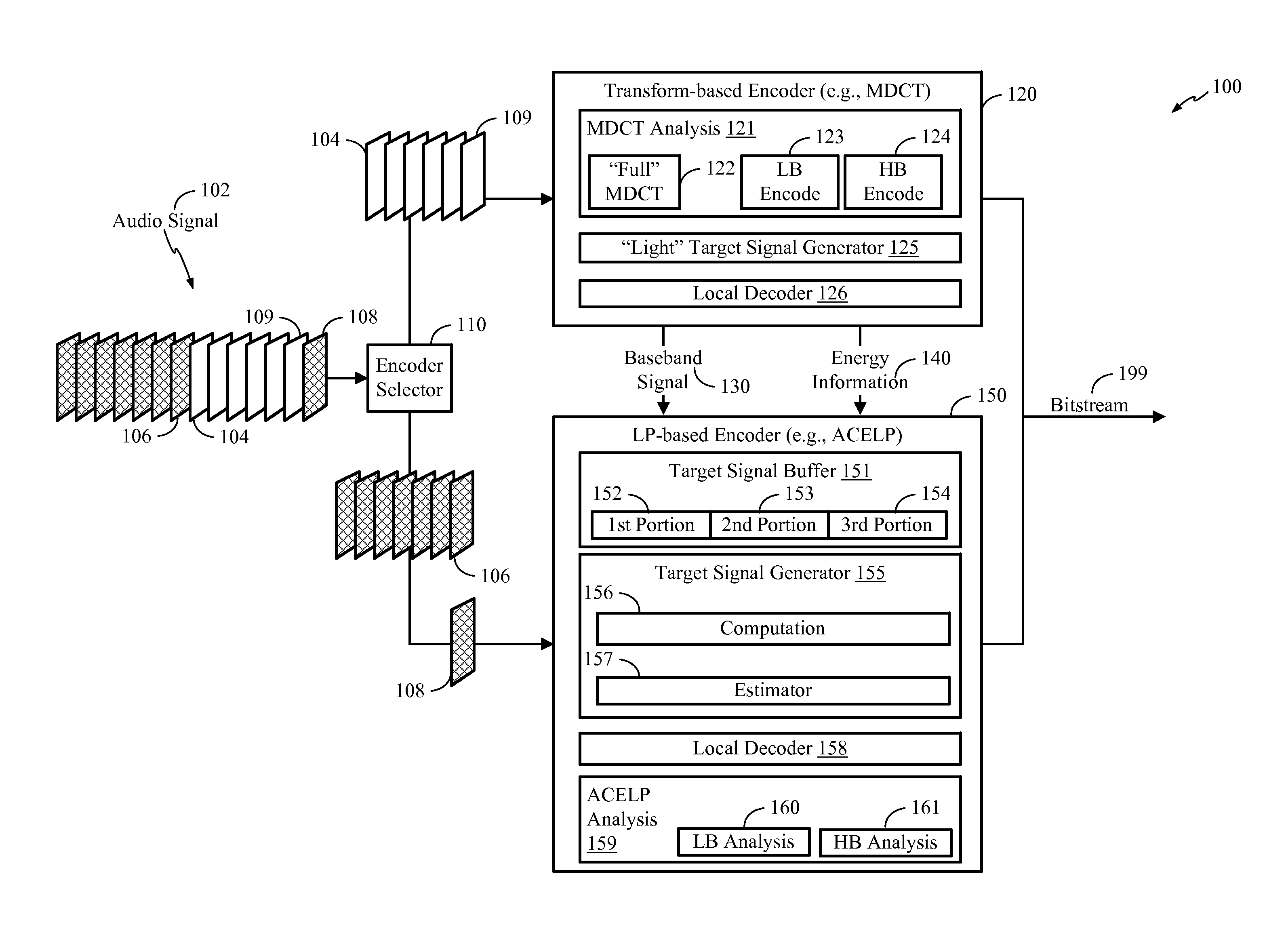Systems and methods of switching coding technologies at a device
- Summary
- Abstract
- Description
- Claims
- Application Information
AI Technical Summary
Benefits of technology
Problems solved by technology
Method used
Image
Examples
Embodiment Construction
[0041]Referring to FIG. 1, a particular example of a system that is operable to switch encoders (e.g., encoding technologies) while reducing frame boundary artifacts and energy mismatches is depicted and generally designated 100. In an illustrative example, the system 100 is integrated into an electronic device, such as a wireless telephone, a tablet computer, etc. The system 100 includes an encoder selector 110, a transform-based encoder (e.g., an MDCT encoder 120), and an LP-based encoder (e.g., an ACELP encoder 150). In an alternate example, different types of encoding technologies may be implemented in the system 100.
[0042]In the following description, various functions performed by the system 100 of FIG. 1 are described as being performed by certain components or modules. However, this division of components and modules is for illustration only. In an alternate example, a function performed by a particular component or module may instead be divided amongst multiple components o...
PUM
 Login to view more
Login to view more Abstract
Description
Claims
Application Information
 Login to view more
Login to view more - R&D Engineer
- R&D Manager
- IP Professional
- Industry Leading Data Capabilities
- Powerful AI technology
- Patent DNA Extraction
Browse by: Latest US Patents, China's latest patents, Technical Efficacy Thesaurus, Application Domain, Technology Topic.
© 2024 PatSnap. All rights reserved.Legal|Privacy policy|Modern Slavery Act Transparency Statement|Sitemap



